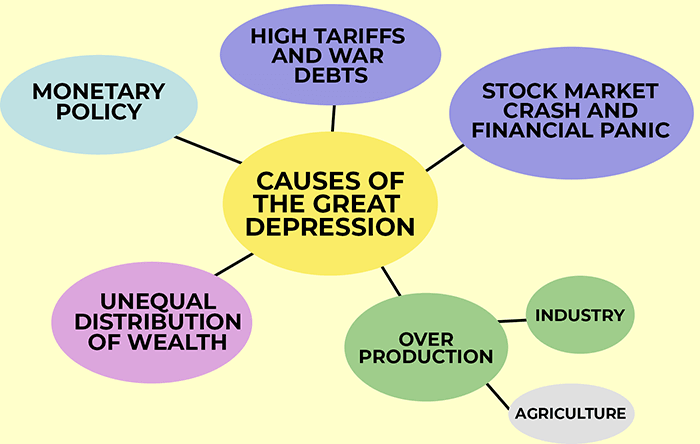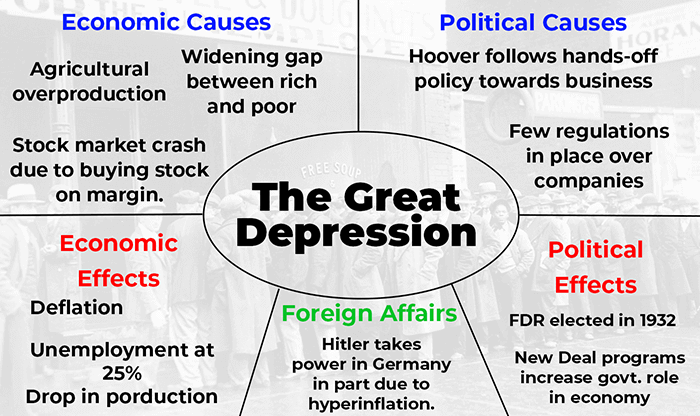The Great Depression of 1929
by Devender
0 2387
The great depression of 1929 began in USA. After the first World War, US saw a big increase in the production of goods. Despite all this development, more than half of the US population was living under the minimum subsistence level.
The Great Depression of 1929
The capitalists only wanted to increase their profits and in order to do that, they started producing more and more goods. This led to the crisis of overproduction. The purchasing power of the people was the same, so the goods could not be sold unless their prices were reduced but it could not be done as it would affect the profits.
- The goods remained unsold
- Factories were closed to stop more production
- It resulted in unemployment which made the situation worse
- This kind of situation happened in almost every country after the industrial revolution
- In October, the whole economy began to collapse
- The stock market in New York crashed
- The fall in the value of stocks created a lot of panics
- 16 million shares were sold in NY stock exchange in just one day
- In some companies, the shares held by people became totally worthless
- The crisis of 1929-33 was the worst in history
More than 9000 American banks were closed and millions of people lost their life's savings. People had very little money left hence, the products in the market remained unsold. The farmers and manufacturers didn't get any money to invest. This led to the closing of a lot of factories and thus, unemployment.
Due to the unemployment, the purchasing power of people decreased even more which resulted in more goods going unsold and hence, more factories being shut resulting in more unemployment.

Spread of Depression to Europe
The depression reached almost all the capitalist countries of Europe in 1931. After the First World War, the economies of almost every European country except Russia became dependent on the economy of America and on American banks. The situation in Europe became similar to the US and in some cases even worse than that.
The result of the crisis was large-scale unemployment, loss of production, starvation, and poverty. The crisis was the most terrible in history and affected the lives of millions of people all over the world.
Thousands of factories, businesses, banks were closed. Industrial production fell up to 50% in all the countries. It was after 1933, that the economies of these affected countries began to recover.
Impact of the Great Depression
The economic crisis also created serious political consequences. Nazis in Germany used this opportunity to promote their anti-democratic program. Hunger Marches and socialist movements were being organized in many countries to make changes in economic system.

- The only country that was not affected by the crisis was USSR
- US economy was most affected by this crisis
- Due to the crisis, Democratic Party won elections in US
- Franklin D. Roosevelt became the President of the United States in 1933
- He started a program of economic reconstruction and social welfare
- This program was called the New Deal
- Many steps were taken to create employment and improve the conditions of workers
- Soon, the economy of US got back on track
Once again, the US was able to retain its position as a world power still its foreign policy was the same as Britain and France. It did not work against the rise of fascist powers until the end of the Second World war.

Share:







Comments
Waiting for your comments